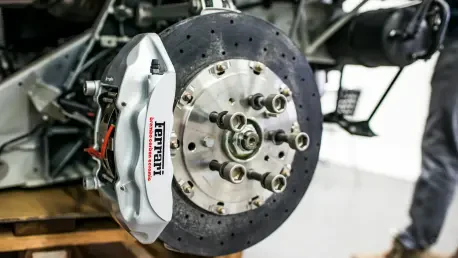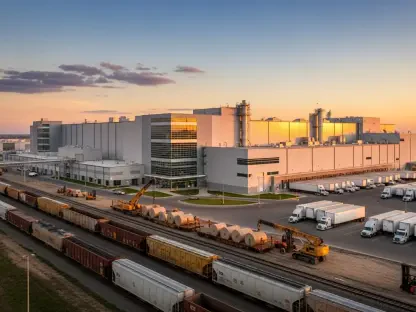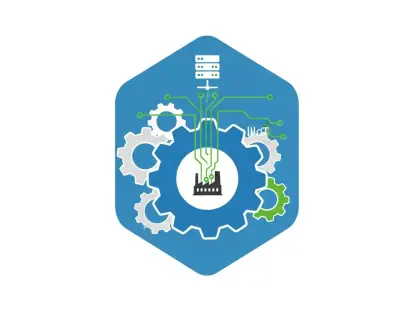In a fiercely competitive global market, U.S. automakers are grappling with razor-thin margins and soaring production costs, with the average price of a new vehicle hitting a staggering $50,080 as reported by Kelley Blue Book. A single policy shift could tip the scales, either easing the burden or adding new pressures to an already strained industry. President Trump’s recent tariff relief proclamation promises a lifeline through extended rebates on auto parts, but at what cost to consumers and long-term competitiveness? This pivotal moment demands a closer look at how such changes might reshape the landscape for American car manufacturers and the millions who rely on their products.
The Stakes of Tariffs for American Automakers
Tariffs have long been a critical factor in determining the profitability of U.S. automakers, acting as both a shield against foreign competition and a weight on production expenses. With imported parts often constituting a significant portion of a vehicle’s cost, any adjustment in tariff policy can directly influence the bottom line for companies like Ford and General Motors. The current relief package, extending rebates on these parts, aims to reduce financial strain, but it also raises questions about dependency on such measures in a volatile trade environment.
The importance of this issue cannot be overstated, as the auto industry supports millions of jobs across the country, from factory floors to dealership lots. A misstep in policy could lead to higher consumer prices or reduced market share against international rivals. This delicate balance between protection and affordability sets the stage for understanding why Trump’s latest move is generating both hope and skepticism among industry leaders.
Tariffs and Trade: Shaping the Auto Industry’s Horizon
Beyond immediate cost implications, tariffs are deeply intertwined with broader trade strategies that influence the auto sector’s future. Trump’s approach seeks to bolster domestic manufacturing by incentivizing companies to source more components locally, aligning with goals to strengthen American supply chains. However, this comes against a backdrop of complex agreements like the U.S.-Mexico-Canada Agreement (USMCA), which is under renegotiation and could alter the tariff landscape further.
Rising vehicle prices, up 3.6% year-over-year, reflect the mounting pressure on automakers to absorb costs without alienating buyers. Consumers, already reeling from sticker shock, may find little relief if new import taxes on trucks and buses counteract savings from rebates. This tension highlights a critical challenge: crafting policies that protect local jobs without burdening the very market they aim to serve.
Unpacking the Policy: Rebates, Taxes, and Exemptions
At the heart of Trump’s proclamation is an extension of a tariff rebate on auto parts, now lasting until 2030 at a rate of 3.75% tied to the sales price of domestically assembled vehicles. This relief, calculated from a 25% import tax on parts making up 15% of a car’s price, offers a measurable reduction in production costs. Additionally, the policy expands to cover truck and engine manufacturers, broadening its reach across the industry.
New tariffs, however, introduce a counterweight, with a 25% tax on medium and heavy-duty trucks and a 10% tariff on buses effective from November 1. Exemptions under the USMCA provide some respite for qualifying imports, ensuring that not all foreign components face the same burden. These specifics underscore how targeted adjustments can ripple through supply chains, affecting everything from assembly lines to final pricing.
The precision of these measures—down to percentage points and exemption clauses—demonstrates an attempt to fine-tune economic impacts. Yet, the interplay between relief and new taxes creates uncertainty about net benefits for automakers. Understanding these mechanics is essential for grasping the full scope of what this policy shift entails for the sector.
Industry Reactions: Perspectives on Tariff Relief
Feedback from industry stakeholders paints a mixed picture of optimism and caution regarding the tariff adjustments. Senior administration officials, speaking on condition of anonymity, have emphasized that the policy emerged from extensive dialogue with automakers, suggesting a collaborative effort to address real-time challenges. This engagement signals an intent to align government action with industry needs, though outcomes remain under scrutiny.
Analysts point to the persistent rise in vehicle costs as a backdrop to these changes, with some questioning whether rebates will sufficiently offset the impact of new import taxes. A trade expert noted that while the extension to 2030 provides breathing room, it may not fully incentivize the massive shift to domestic production that the administration envisions. Such insights reveal a divide between short-term relief and long-term strategic goals, fueling ongoing debates within the sector.
Automakers themselves have yet to issue unified public statements, but early indications suggest a cautious welcome of cost reductions paired with concerns over new tariffs disrupting global supply networks. This spectrum of reactions illustrates the complexity of implementing trade policies in an interconnected market. Balancing these diverse viewpoints offers a clearer lens on the potential trajectory of U.S. auto manufacturing.
Adapting to Change: Strategies for Automakers and Buyers
For U.S. automakers, navigating this tariff landscape requires strategic adjustments to capitalize on rebates while mitigating new costs. Accelerating plans to relocate more production within American borders could maximize benefits under the 3.75% rebate structure, reducing reliance on imported parts. Revising supply chains to prioritize USMCA-compliant sources may also help dodge additional tariffs, preserving cost efficiencies.
Consumers, meanwhile, face the downstream effects of these policies and should remain vigilant about potential price fluctuations. As automakers juggle savings from rebates with expenses from new taxes, the impact on showroom stickers could vary widely. Staying informed about market trends and timing purchases around anticipated cost shifts might offer some advantage in an unpredictable pricing environment.
Both parties stand to gain from proactive engagement with these changes, whether through operational pivots or informed decision-making. Automakers could use this moment to invest in local innovation, while buyers might benefit from advocating for transparency in how policy savings translate to retail costs. This dual focus ensures that the tariff relief’s potential is not lost amid competing economic forces.
Reflecting on the Path Ahead
Looking back, the tariff relief measures introduced by President Trump marked a significant chapter in the ongoing saga of U.S. auto manufacturing, blending immediate financial support with complex trade barriers. The extension of rebates until 2030 provided a cushion for an industry under pressure, while new taxes on trucks and buses underscored a persistent commitment to protecting domestic interests. These dual moves captured the intricate dance between policy intent and market reality.
As the dust settled, it became clear that sustained dialogue between government and industry stakeholders was crucial for refining such initiatives. Automakers had to chart a course toward greater self-reliance in production, while consumers needed clarity on how costs would evolve. A forward-looking approach demanded investment in local supply chains and technology to reduce dependency on volatile trade policies.
Ultimately, the legacy of these tariff adjustments hinged on adaptability and collaboration. Industry leaders were tasked with leveraging short-term gains for long-term stability, while policymakers had to monitor economic ripple effects with precision. The road ahead called for a shared commitment to balancing protectionism with affordability, ensuring that American automakers could thrive without leaving buyers behind.









